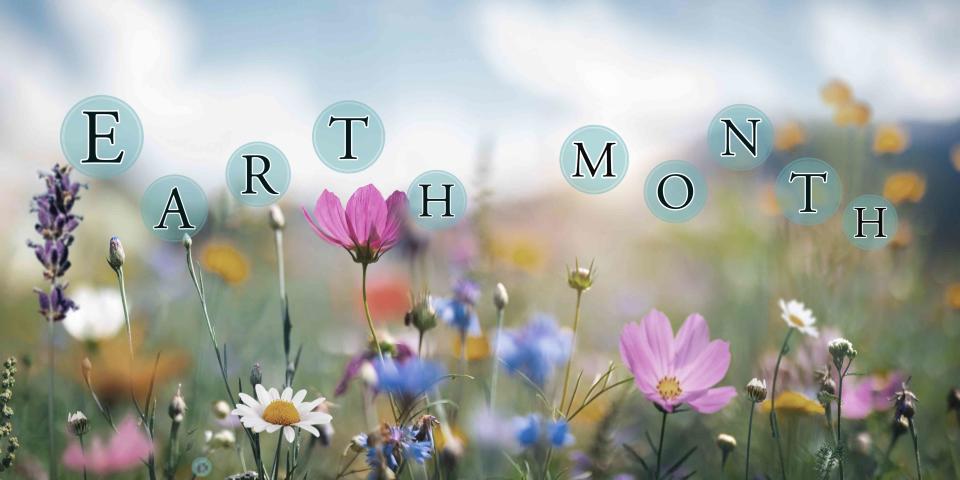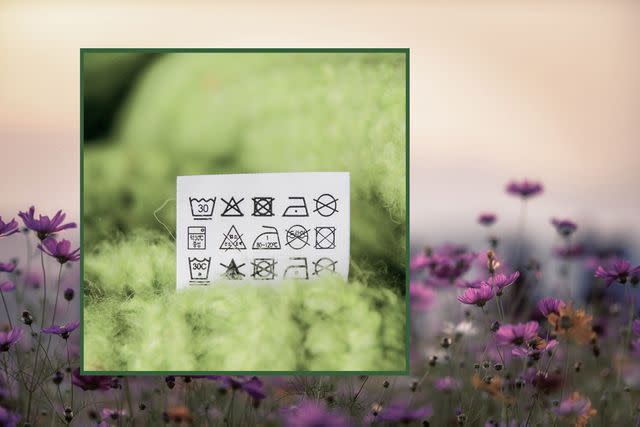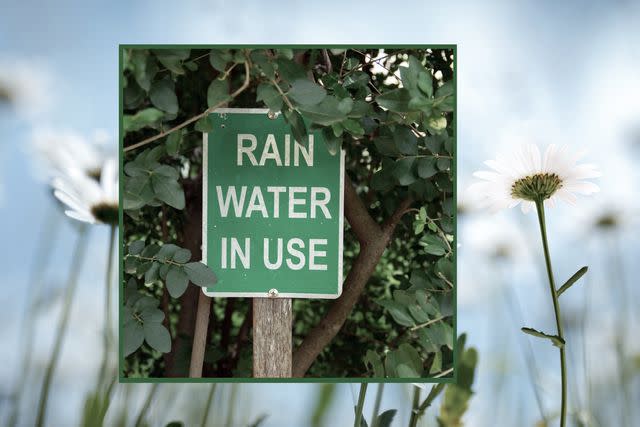Earth Month Challenge: 30 Easy Actions for Every Day of April
Celebrate our beautiful home planet with a small act for every day of the month.

Treehugger / Getty Images
Is pollution bumming you out? Is the dystopian destruction of nature making you stressed? Are you worried about the end of the world as we know it? Congratulations, you may have eco-anxiety!
But fear not. It's Earth Month, and we are here to help.
Even if you aren't losing sleep over climate change and the collapse of the natural world and all that jazz, there are so many reasons to lighten one's footsteps. So in honor of Earth Day—and for the entirety of Earth Month—we've created an action or a tip or a thought-starter a day to help you ease into a more sustainable existence.
The following range from novice to expert, but all have one thing in common: They are simple ways to make an impact. Consider them as gentle guidance; use them however best suits you, but challenge yourself to address them all by the end of the month. Once you see how sensible they are and easy to accomplish, we have faith that at least a few will stick.
Ready? Let's go!
April 1: Unsubscribe From 5 Unwanted Emails
Yes, it is easier to hit delete than it is to unsubscribe from an unwanted listserve or newsletter. But for today, your task is to unsubscribe from five regular sends that you never read. (Feel free to do more if you're on a roll!) If you can get into this habit and unsubscribe as you go, not only will your inbox be leaner, but so will your carbon footprint. Every newsletter generates around 10 grams of CO2, and only around 10% of newsletters are ever opened.

Treehugger / Getty Images
April 2: Put a Politician on Speed Dial
If you’re interested in pushing for system change, put your elected officials' office numbers in your phone. Then whenever there’s a piece of environment-related policy up for a vote, it’s easy to give them a call and advocate for sustainability.
April 3: Turn Off the Tap When Brushing Teeth
You have probably heard this before, but there's a reason people keep repeating this tip. The average faucet releases two gallons of water per minute. If you brush twice a day for the recommended two minutes, you can save up to eight gallons of water every day by turning off the tap while you brush.
April 4: Lower Your Thermostat by 1 Degree
This won't hurt a bit, we promise. What's one degree? Not much, but small increments do add up. As Paul Greenberg, author of "The Climate Diet," writes, "Turning down the thermostat [when the heat is on] by just a single degree can save a household in a northern climate around 40 kilograms of carbon emissions every year."
April 5: Read an Owner's Manual
Wait, what? Hear us out. If you haven’t read the owner’s manual for something you use frequently, do it today! Especially consider larger appliances like your washer/dryer or dishwasher—using these machines as they’re designed to be used maximizes their energy and water efficiency. And you may be missing out on resource-saving features. Even for smaller appliances, following manufacturers’ directions for proper use will improve a machine’s performance and, importantly, add to its longevity.

Treehugger / Getty Images
April 6: Check for Leaky Faucets
Do a quick survey of your faucets and make sure that none are leaking. A leaky faucet dripping at the rate of one drip per second can waste more than 3,000 gallons per year. Most leaks are often easy to repair, requiring just a few tools and some hardware. (Also, remember that a running toilet can waste up to 200 gallons of water each day.)
April 7: Cook Pasta in its Sauce, Not Water
When we first suggested this in 2016, readers were ready to ride at dawn. But then TikTok happened, and the wonder of one-pot meals took over the Internet, and skipping the pasta water is now trendy. The planet is pleased! Why? Because some American households will use over 100 gallons of water a year just cooking pasta alone—and that water goes right down the sink when it's done. Instead, cook your pasta directly in its sauce for a delicious dinner that saves a boatload of water. See: Simple Cooking Trick Could Save You 100 Gallons of Water, Make Dinner Better.
April 8: Skip Meat and Cheese for a Day
OK, vegans get an easy day—for the rest of you, today you get to skip meat and cheese and opt for other proteins instead. We know you can do it! And why would you want to? If everyone in the United States skipped meat and cheese for one day a week, it would be like taking 7.6 million cars off the road—or not driving 91 billion miles.
April 9: Resist Double-Spaces Between Sentences
In the olden days of actual typewriters, people learned to use two spaces after a period, as a single space didn't make quite enough room. A lot of people still swear by double spaces, and it has been shown to make written passages easier to read. However, we crunched the numbers and found that the extra spaces, in a printed book, for example, really add up. Consider all of the books published in the U.S. for a year: With an average of 5,294 extra spaces per book, it results in over a quarter of a billion extra pages, 26,471 trees, and about 163 acres of forest, eaten up just for that extra space between each sentence.

Treehugger / Getty Images
April 10: Think About Air Drying
The clothes dryer is one of the largest energy users in the home, often consuming as much as a new refrigerator, dishwasher, and clothes washer combined. Old-school clotheslines and the sunkissed, breeze-dried clothes they deliver may not be an option for everyone, but there are some really nifty drying racks, including collapsible ones for small spaces, that are definitely worth taking a look at. (That said, if you can string up a clothesline, all the better!)
Related:The 7 Best Clothes Drying Racks
April 11: Learn About Swedish Dishcloths
Even the most stalwart greenies may long for the convenience of paper towels, but reusable Swedish dishcloths put those longings to rest once and for all. Each cloth is wildly absorbent, can be washed 50 times, and saves you 17 rolls of paper towels! Treehugger editors swear by them. For today's challenge, we ask you to read more about them, and then buy one if you feel inspired.
Related:Try Swedish Dishcloths and Say 'Goodbye' to Paper Towels Forever
April 12: Swap Coffee Milk with Plant-Based Milk For a Day
Adding dairy milk to coffee nearly doubles your coffee's carbon footprint, from 0.28 kilograms of CO2e for a single espresso to 0.55 kilograms of CO2e for a latte. If you switch to plant-based milk, the average emissions are around half that of dairy milk.
Pro-Tip: If you really don't like the taste of plant-based milk, try half regular milk and half plant-based milk—you will at least be halving the emissions, and you will probably not even notice a difference.
April 13: Have a Zero Waste Food Day
Today, you will not put any food in a trash can. As Chad Frischmann, vice president and research director at Project Drawdown, says, "Reducing food waste is one of the most important things we can do to reverse global warming." So you will finish your meals or store the leftovers to eat (not toss) later. You will scrape the last bit out of a nearly empty jar. You will eat your carrots scrubbed but not peeled. When cooking, you will put your onion skins and other scraps in the freezer to make stock later. And anything else will go in a compost bin.

Treehugger / Dr. Bronner's
Dr. Bronner shows off his famously epic labelsApril 14: Read the Directions on Products
Many people use way more of a cleaning product than they need, especially now that numerous products are more concentrated. More is not better! For example, using too much laundry detergent can: leave stains or residue on clothes; make it difficult for proper draining, resulting in wetter clothes; lead to increased wear and tear on the washing machine’s pump and motor from the suds; and the use of more energy since machines may automatically add extra rinses and pauses to break down excess suds. Read your product's instructions and follow them.
April 15: Try Cold Water for Laundry
Wash and rinse temperatures have a dramatic impact on overall energy use. Between 75% and 90% of the energy used for washing goes to heating water, so switching to cold water leads to significant energy and cost savings. Many modern detergents have enzymes that work effectively at temperatures below 60 F, but you can also buy detergents that are specifically geared toward cold water use. (Remember to read your appliance manual for specifics on detergents, and read the detergents' label for official instructions on usage.)
April 16: Buy an Item Locally Instead of a Mega Retailer
If you are able, make a pledge to buy something at a local, independent seller rather than a big box store or Amazon. Most of us bemoan the closing of mom-and-pop shops—but the only way to help them stay open is by shopping at them. There are contradictory findings when comparing the carbon footprint of online shopping versus local businesses, but there is no question about what's better for the community.
April 17: Save All Your Garbage For a Day
According to the EPA, in the U.S., we each generate 4.9 pounds of municipal solid waste a day. So today, we are tasking you with an exercise in trash tracking. Grab a bag, and instead of using a garbage bin, put your daily trash in the bag. You can put food scraps in a compost bin and recyclables in the recycling bin, but at the end of the day, consider the trash that you would be sending to the landfill and think about ways you might be able to lessen it. If this challenge is untenable because of work or other obstacles, as an alternative, you can list every item you tossed.
April 18: Check in on Your Water Heater
Check the thermostat on your water heater. Many manufacturers set the thermostat at 140 F, but a setting of 120 F is adequate for most home needs. If you're worried it won't produce hot enough water, try turning it down to 130 F first—every but makes a difference!

Treehugger / Getty Images
April 19: Consider the Tea Towel
Sure, some chefs have a kitchen full of fancy gadgets. But we are smitten with the humble tea towel, the true workhorse of the kitchen. Beyond drying dishes, tea towels can serve as stand-ins for myriad purposes, making them a sustainability superstar. Today, read this —20 Ways to Use Tea Towels—then take a look at your tea towels and see them in a new light.
April 20: Learn What to do With Old CDs
Do you have a box of CDs somewhere gathering dust? If so, today you can learn about what to do with them—which is not to throw them in the trash. CDs take more than 1 million years to completely decompose in a landfill. You may be able to curbside recycle them in your municipality. If not, use Earth911’s search tool to see if there is a drop-off nearby. You can also send them to GreenDisk. Lastly, learn how to repurpose them!
April 21: Remember Your Local Library
Readers often ask what’s greener, a paper book or an e-book? Our answer may surprise you: Neither! Because the greenest book is one that is read by many, namely, one that comes from a library. If you haven’t been to your library in a while (or ever), consider making a visit as soon as you can.
April 22: Show Some Love to a Local Tree
Happy Earth Day! To celebrate today, celebrate a tree. Trees are everything. These graceful giants do more for us than we can put in a single paragraph, but trust us when we say we'd be nothing without them. In an effort to foster a little extra love for the trees, today's assignment is to simply observe a tree that you regularly pass but never pay much attention to. Learn what kind of tree it is, research a few facts, and say a secret thank you.
Related:15 Astounding Facts About Trees

Treehugger / Getty Images
April 23: Learn Laundry Care Symbols
Some people are laundry whisperers and know just what to do with each item of clothing. For the rest of us mere mortals, we rely on laundry care labels. But what do those hieroglyphics actually mean? Understanding this secret code is the key to taking care of your clothing and helping it have a long life.
Learn more at How To Read Laundry Care Labels, you might even consider taking a screenshot or printing out the cheat sheet and keeping it in your laundry area.
April 24: Save the Birds!
If you have ever had a bird hit your window, today’s assignment is to read about easy solutions for preventing window collisions. Up to one billion birds die in the U.S. annually from hitting glass. Up to 378 million of those occur at residences. Given the biodiversity crisis we’re facing, every bird matters! The American Bird Conservancy is a great resource for you to learn about easy window treatments, some of which you can cheaply do yourself. (Spoiler alert: Bird of prey decals do not work.)
April 25: Try Driving Slower Today
If driving a car on the highway is part of your daily routine, today we challenge you to keep it at 55 miles per hour or under. Staying at or below 55 vastly improves your fuel efficiency, and for every 5 miles per hour above 55 that you go, you reduce your fuel efficiency by 10 percent. If you don’t drive, you get a free pass on today’s challenge.
April 26: Explore Carbon Offsets For Travel
Air travel is the elephant in the room for eco-enthusiasts with wanderlust. Air travel can make up a large part of a frequent traveler’s individual contribution to climate change. We always recommend buying carbon offsets to help counteract your travel footprint by helping build clean energy and carbon-reducing projects. By signing up for a carbon offset program today, you will be one step closer to offsetting that next adventure.
Related:The 6 Best Carbon Offset Programs

Treehugger / Getty Images
April 27: Buy (or Make) an Apron
This may be niche, but here goes. If you cook and don’t already wear an apron: Consider making or buying one! Of course, you can bib yourself with a tea towel, but an apron is one of the best investments a cook can make in an effort to protect their clothes from the chaos of the kitchen.
April 28: Try a 4-Minute Shower
Glory be the long, hot shower. Alas, across the U.S. we use more than one trillion gallons of water each year just for showering. Most showers lasts around eight minutes. Since the average showerhead has a water flow of 2.1 gallons per minute, each shower uses more than 16 gallons of water. Halve your showering time and you’ll save eight gallons! For tips, see: Could You Start Taking Four-Minute Showers?
April 29: Repeat an Outfit
The onset of fast fashion means that the average American now throws 70 pounds of textile waste into landfill each year. For some reason, repeating outfits is seen as verboten, when just the opposite should be true! This week, proudly wear the same outfit twice. We almost guarantee that nobody will even notice.

Treehugger / Getty Images
April 30: Understand the Importance of Water Conservation
A lot of the month's tips center around water conservation. Those of us in areas with ample precipitation may not think much about saving water—even Treehugger editors have been guilty of this. But prepare for an aha moment: It takes a lot of energy to transport water, clean it, pump it, and then treat the waste.
Related:The Carbon Footprint of Tap Water Is a Lot Higher Than You Think
Water and wastewater utilities are among the largest individual energy users in a city, and they account for about a third of a typical municipal government’s energy use. Some cities use as much as 60% of their energy on these utilities! So, if you want to lower your carbon footprint, you might really want to consider that four-minute shower after all.

